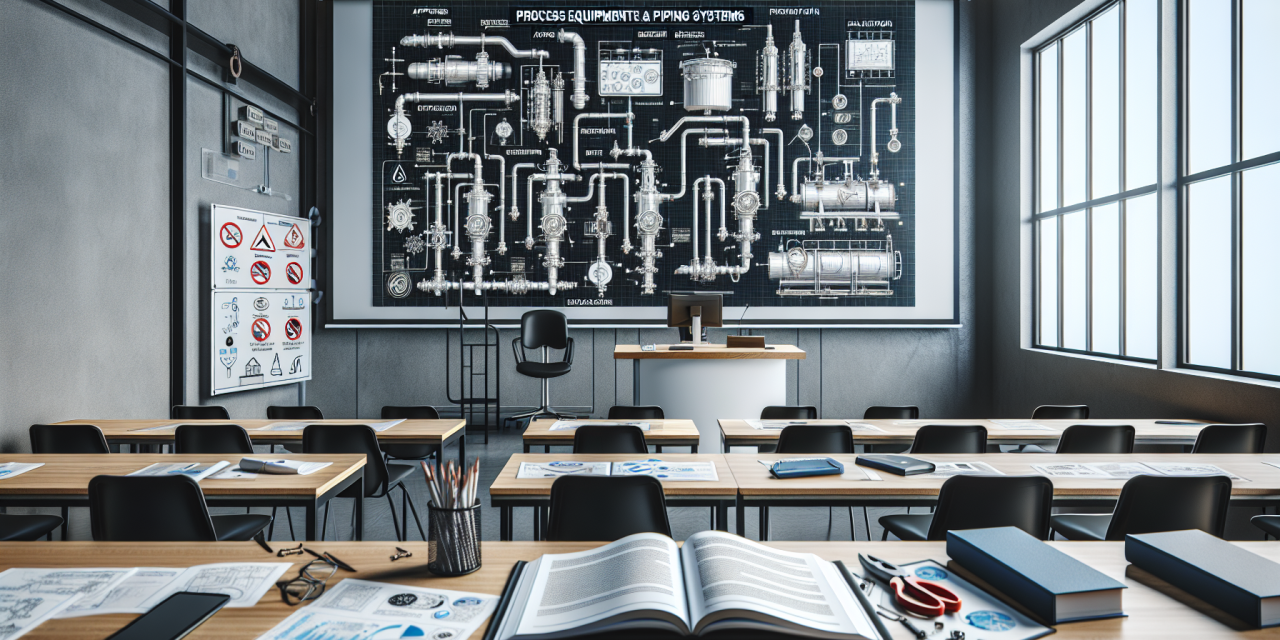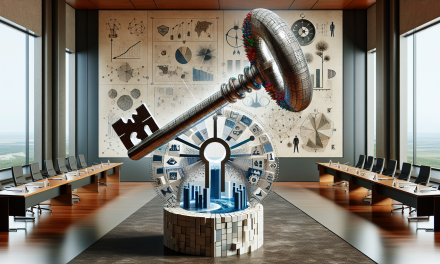Table of Contents
- Introduction
- The Importance of Process Equipment & Piping Systems
- Applications of Process Equipment & Piping Systems
- Design of Process Equipment & Piping Systems
- Failure Prevention Techniques
- Repairing Process Equipment & Piping Systems
- FAQs
- Conclusion
Introduction
In today’s fast-paced industrial landscape, process equipment and piping systems play a crucial role in ensuring efficient production and operational success. Understanding their applications, design methodologies, failure prevention strategies, and repair techniques can significantly impact productivity and safety. Therefore, professionals seek knowledge and expertise through specialized seminars that address these essential topics.
The Importance of Process Equipment & Piping Systems
First and foremost, process equipment refers to any machinery used to transform raw materials into finished products. Additionally, piping systems are integral for transporting those materials between processes. As a result, any failure or inefficiency in these systems can lead to significant setbacks.
Understanding the Interdependence
Moreover, understanding how process equipment and piping systems interrelate is essential for optimizing operations. For instance, operators must coordinate maintenance schedules without interrupting production, ensuring that valves, pumps, and pipes work harmoniously.
Applications of Process Equipment & Piping Systems
When it comes to applications, the realm of process equipment and piping systems spans numerous industries. From chemical processing and pharmaceuticals to food and beverage manufacturing, you’ll find these systems at the heart of operations.
Chemical Industry
In the chemical industry, for example, various processes involve the mixing, heating, and even cooling of substances. Thus, understanding how to design systems that efficiently handle diverse materials can lead to improved outcomes.
Food and Beverage
Similar considerations apply to the food and beverage sector, where strict hygiene standards and adherence to regulations come into play. Effective piping design ensures that products maintain their quality from production to consumption.
Pharmaceuticals
Additionally, in the pharmaceutical sector, accurate designs for sterilization processes are pivotal. Consequently, engineers must take great care in developing systems that uphold the highest standards of safety and quality.
Design of Process Equipment & Piping Systems
Principles of Design
Designing process equipment and piping systems encompasses several principles that ensure longevity and efficiency. For instance, one crucial aspect involves selecting appropriate materials based on the specific requirements of the project.
Material Selection
Furthermore, the materials chosen should withstand the operational environment, whether it be extreme temperatures, corrosive substances, or high pressures. Thus, engineers often refer to established guidelines and standards when making these selections.
Flow Dynamics
Flow dynamics also significantly impacts the design process. To elaborate, an understanding of fluid dynamics helps in determining the optimal layout for piping systems, thereby minimizing pressure drops and turbulent flows.
Piping Layout Considerations
For example, well-thought-out piping layouts reduce the chances of leaks and wear-related failures. Additionally, incorporating Process Equipment & Piping Systems Seminar: Design & Repair Techniques enhances knowledge regarding innovative design strategies that can be applied in real-world situations.
Failure Prevention Techniques
Common Failure Causes
Next, identifying common causes of failures in process equipment and piping systems is key to preventing them. Regular maintenance practices often uncover issues before they escalate.
Inspection and Monitoring
Conducting routine inspections of valves, flanges, and other critical components ensures that potential problems are addressed proactively. Moreover, integrating modern technologies such as sensors for real-time monitoring enhances detection capabilities.
Predictive Maintenance
Adopting a predictive maintenance approach further extends the lifespan of equipment. By analyzing data trends and performance metrics, organizations can schedule repairs before failures occur.
Repairing Process Equipment & Piping Systems
Understanding Repairs
When repairs become necessary, knowledge of effective techniques is invaluable. Notably, many repairs can prevent further damage and save costs in the long run.
Types of Repairs
Applicable repair methods can range from minor patches to complete replacements. For instance, using advanced welding techniques can reinforce pipe integrity while minimizing downtime.
Collaboration with Experts
Moreover, collaborating with skilled professionals ensures that repairs align with industry standards. Consequently, it’s vital for organizations to invest in knowledge-sharing opportunities that enhance team capabilities.
FAQs
What is the main goal of a seminar focused on process equipment and piping systems?
The primary goal of such a seminar is to enhance participants’ understanding of application, design, preventive measures, and effective repair techniques. This knowledge empowers professionals to improve operational efficiency.
How can one benefit from attending such seminars?
Attending seminars allows professionals to gain insights from experts, network with peers, and share experiences. Additionally, they learn about the latest technologies and methods that can be implemented within their own organizations.
Are there any resources available for further education on this topic?
Absolutely! The seminar provides resources and further reading materials. For additional learning, take a look at articles such as Elevating Vendor Management: The Importance of Qualification, Performance & Compliance and Unlocking Success through Effective Contract Management and Claims Training.
What role does leadership play in managing process equipment and piping systems?
Effective leadership fosters a culture of safety and awareness, emphasizing the significance of continuous improvement in equipment management. For instance, strong leaders inspire their teams to prioritize equipment maintenance and consider best practices.
Conclusion
In summary, mastering the intricacies of process equipment and piping systems involves a plethora of considerations, from design to failure prevention and repairs. By attending seminars and immersing oneself in the subject, professionals not only elevate their own understanding but also contribute positively to their organizations. Therefore, embracing opportunities for learning and growth remains an indispensable part of the journey toward operational excellence. For more insights, explore additional resources like Unlocking Leadership Potential: Strategies for Influence and Trust in Professional Settings, Maximizing Workplace Safety: Insights from the IOSH Managing Safely Training Conference, and Unlocking Success: The Importance of the International Contracting Management Conference for Professionals.





